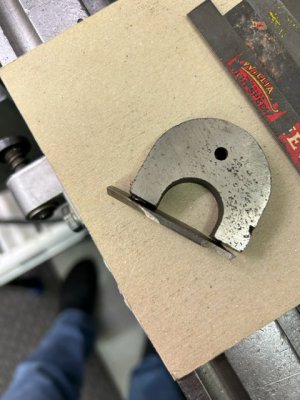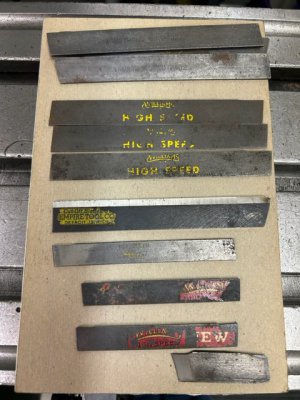I made a brief foray into carbide insert parting. It didn't go too well, so I went back to HSS. While I still occasionally have a few problems they aren't as costly regrinding a HSS tool is cheaper than replacing an insert or worse $$, the holder.
For cutting through tubing or pipe, I find using a left or right ground tool works better than a flat front. As Dabbler mentioned, if the tool brakes through a thin wall section of the tube, it will catch on the thicker portion and cause problems. However, if the front edge of tool is skewed to one side, only the point will break through and the tool will still be supported by the rest of the cutting edge, helping to prevent it from springing forward.
HSS allows easy regrinding of the tool to suit the cut and and is much less likely to break. I believe the inserts are better suited for CNC, but as the OP is showing, it appears they can be a PITA on those machines as well.
 oned and is angled as you said.
oned and is angled as you said.
